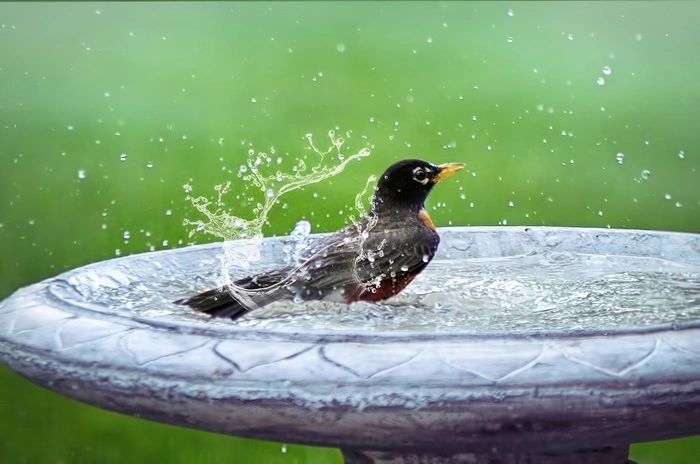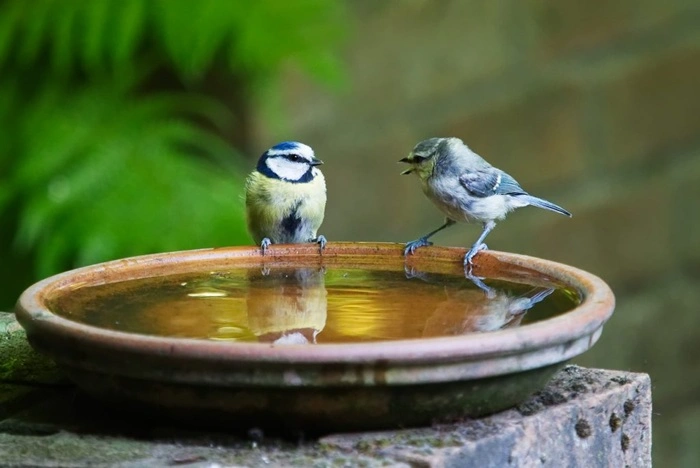Bird bowls are a simple yet essential accessory for bird enthusiasts and backyard bird watchers. These specially designed feeding bowls provide a convenient way to offer food and water to wild birds, pet birds, or garden visitors. In this comprehensive guide, we’ll explore everything about bird bowls their types, benefits, how to choose the right one, and tips for using them effectively to attract and care for birds.
What Is a Bird Bowl and Why Is It Important?

A bird bowl is a shallow dish or container used to hold birdseed, water, or treats for birds. Unlike traditional hanging feeders, bird bowls are placed on flat surfaces such as tables, decks, or the ground, offering easy access for various bird species.
Bird bowls are important because they provide a reliable food and water source, especially during harsh weather conditions or in urban areas where natural resources may be scarce.
Different Types of Bird Bowls
There are several types of bird bowls designed to meet different feeding needs:
- Water Bowls: Shallow dishes filled with fresh water, crucial for bird hydration and bathing.
- Seed Bowls: Containers specifically made to hold birdseed mixtures, allowing ground-feeding and perch-feeding birds to eat comfortably.
- Multi-Feed Bowls: Bowls divided into sections for different types of food such as seeds, nuts, and fruits.
- Heated Bowls: Equipped with a heating element to prevent water from freezing during winter, ensuring birds always have access to liquid water.
Benefits of Using Bird Bowls in Your Garden
Bird bowls offer multiple advantages for both birds and bird watchers.
Encourages Bird Diversity
By providing accessible food and water, bird bowls attract a wide range of bird species, including sparrows, finches, doves, and even hummingbirds depending on the food offered. This diversity enhances the natural beauty and activity in your garden.
Easy to Clean and Maintain
Bird bowls are generally easier to clean compared to complex hanging feeders. Regular cleaning prevents mold and bacteria growth, promoting bird health.
Accessible to Ground Feeders
Many bird species prefer feeding on the ground. Bird bowls placed at ground level allow these birds to feed safely and comfortably.
Supports Bird Hydration and Hygiene
Water bowls not only provide drinking water but also allow birds to bathe, which is essential for feather maintenance and parasite control.
How to Choose the Right Bird Bowl
Selecting the perfect bird bowl depends on several factors including size, material, location, and maintenance preferences.
Material Options
- Ceramic Bird Bowls: Attractive and stable, but can be fragile.
- Plastic Bowls: Lightweight and affordable but may degrade over time.
- Metal Bowls: Durable and weather-resistant, ideal for long-term use.
- Stone or Concrete Bowls: Heavy and sturdy, resistant to tipping over.
Size and Depth
A shallow bowl with a diameter of 6 to 12 inches and a depth of about 1 to 2 inches works best. This allows birds to perch safely and access food or water easily.
Design Features
Look for bird bowls with textured surfaces or built-in perches to prevent slipping. Some bowls also come with covers or rims to reduce contamination and spillage.
Best Practices for Using Bird Bowls
Using bird bowls effectively involves a few simple steps to maximize benefits and keep birds safe.
Placement Tips
- Place bird bowls in shaded, sheltered areas to keep water cool and prevent food spoilage.
- Position bowls away from dense shrubs to reduce predator risk.
- Ensure bowls are stable and level to prevent tipping.
Cleaning and Maintenance
- Clean bird bowls at least once a week using hot water and mild soap.
- Rinse thoroughly to remove all soap residues.
- Change water daily to provide fresh hydration and prevent disease.
Feeding Tips
- Use fresh birdseed appropriate for local species.
- Avoid overfilling bowls to minimize waste and deter pests.
- Supplement seed with fruits, nuts, or suet to attract a variety of birds.
Popular Bird Bowl Accessories and Enhancements
To enhance the bird feeding experience, consider these helpful accessories:
- Heated Bases: Keep water from freezing in winter.
- Drip Trays: Collect spilled seeds and water, keeping the area tidy.
- Protective Covers: Shield food from rain and larger animals.
- Perch Extensions: Provide extra space for birds to land comfortably.
Frequently Asked Questions About Bird Bowls
Can I use any shallow dish as a bird bowl?
Yes, but dedicated bird bowls have features like stable bases and appropriate depth designed for bird safety and comfort.
How often should I refill the bird bowl?
Refill water daily and replenish food as needed, depending on bird activity and weather conditions.
Are bird bowls safe from squirrels and other pests?
Bird bowls are accessible to squirrels. Using protective covers or placing bowls in squirrel-proof locations can help reduce interference.
What is the best food to put in a bird bowl?
A mix of seeds such as sunflower, millet, and cracked corn attracts a variety of birds. Fresh water is essential.
Can bird bowls be used indoors for pet birds?
Absolutely. Bird bowls are ideal for pet birds as water or food dishes inside cages or aviaries.
Bird Bowls Make Birdwatching More Enjoyable and Beneficial
Bird bowls are a simple yet powerful tool for supporting bird life around your home. They invite nature closer, providing birds with food, water, and a safe place to feed and bathe. By choosing the right bird bowl and maintaining it well, you create a welcoming environment that benefits both birds and bird watchers alike.
Enhance your outdoor space with bird bowls and enjoy the delightful sights and sounds of your feathered visitors every day.



